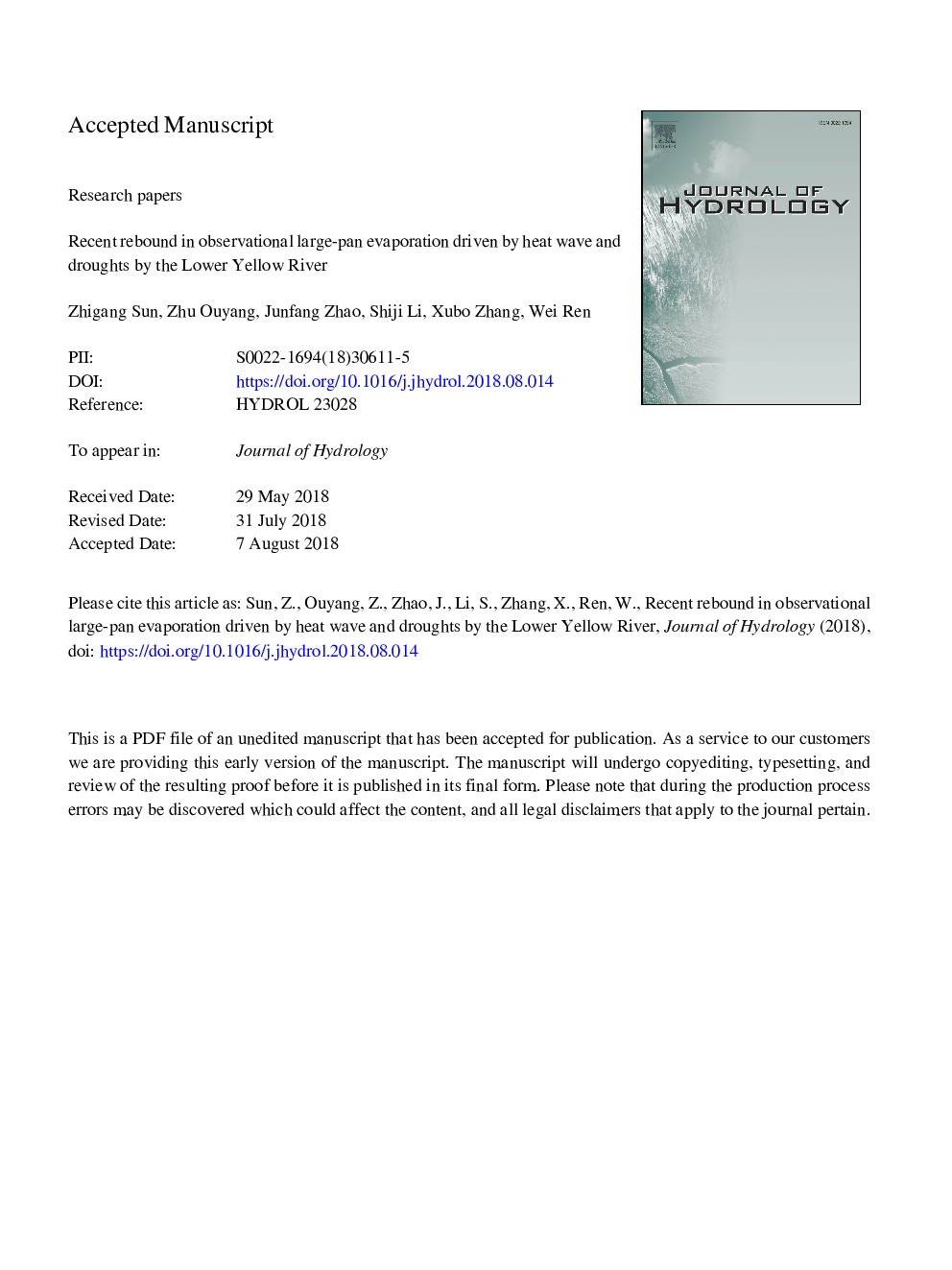| Article ID | Journal | Published Year | Pages | File Type |
|---|---|---|---|---|
| 8894436 | Journal of Hydrology | 2018 | 45 Pages |
Abstract
Pan evaporation, as a straightforward proxy of potential evapotranspiration, has consistently decreased during the last several decades in many regions across the globe mainly because of global dimming and/or decreases in wind speed. Based on a robust measurement dataset of 30-year large-pan evaporation, however, we found that recent increasing extreme climate events have reversed the decreasing trend in pan evaporation by the Lower Yellow River, with a significant increase of up to 25.2â¯mm/yr during 2008-2014. Further analyses show that the decrease in large-pan evaporation during 1985-2008 (â5.1â¯mm/yr) was mainly caused by the decreased vapor pressure deficit (VPD) and sunshine hours. While the sharp increase in large-pan evaporation after 2008 was mainly caused by more frequent heat wave and drought events in spring and summer, which resulted in concurrent increases in air temperature, VPD, and sunshine hours. Our finding of evaporation rebound due to heat wave and droughts calls for improved strategies of water and crop managements for mitigating the negative effects of increasing extreme climate events.
Related Topics
Physical Sciences and Engineering
Earth and Planetary Sciences
Earth-Surface Processes
Authors
Zhigang Sun, Zhu Ouyang, Junfang Zhao, Shiji Li, Xubo Zhang, Wei Ren,
